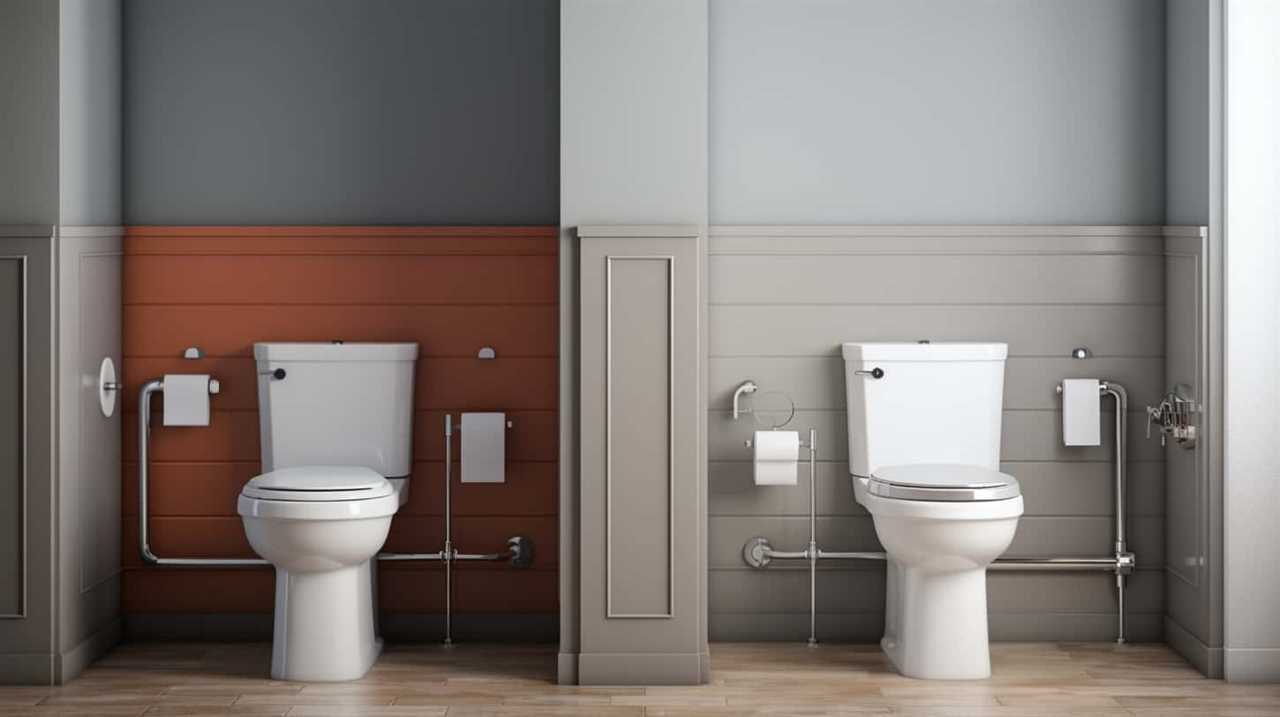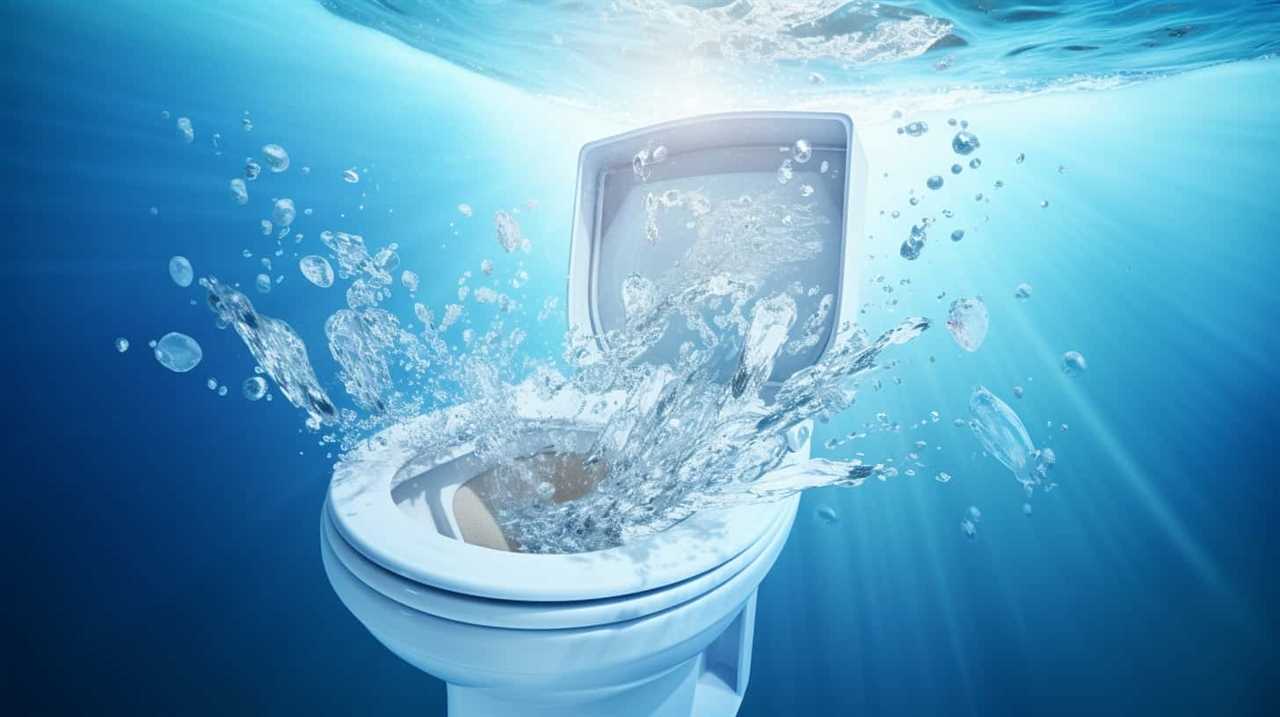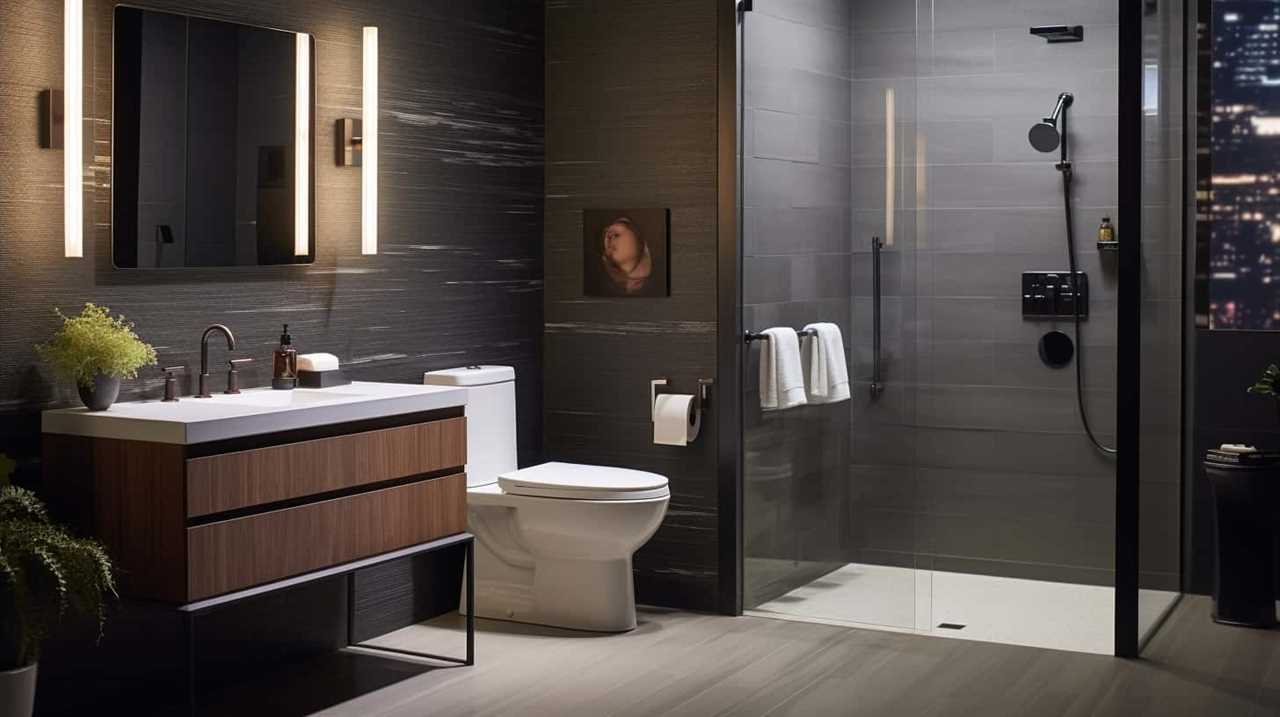Have you ever found yourself in a situation where the water is turned off, but you still need to flush the toilet? Well, fear not, because we’ve got you covered!
In this article, we will explore the various methods and solutions you can use to successfully flush the toilet even when there is no running water. From using a bucket and water to exploring gravity flush systems, we will provide you with all the information you need to keep things flowing smoothly.
Key Takeaways
- Water outages disrupt daily routines and conservation measures are important during these times.
- Using a bucket and water can be an alternative method to flush the toilet during a water outage.
- Gravity flush systems are eco-friendly, require less maintenance, and provide a reliable solution when water is turned off.
- In case of flushing issues, contacting emergency plumber services or using temporary solutions can help restore toilet flushing capabilities.
Understanding the Impact of a Water Outage
Experiencing a water outage can disrupt our daily routines and leave us wondering about the consequences of not having access to water. Understanding the impact of a water outage is crucial for effective water conservation and water supply management.
During a water outage, it’s important to conserve the available water resources and minimize wastage. This can be achieved by adopting simple measures such as taking shorter showers, fixing leaky faucets promptly, and using water-efficient appliances.

Additionally, proper water supply management strategies should be implemented to ensure a continuous and reliable water supply. This may include regular maintenance of water infrastructure, implementing effective water distribution systems, and monitoring water usage patterns.
Using a Bucket and Water to Flush the Toilet
When the water is turned off, we can still flush the toilet by using a bucket and water. This DIY method can be a lifesaver during a water shortage or when there’s a plumbing issue.
Here are three steps to effectively flush the toilet using a bucket and water:
- Fill a bucket with water: Use a sturdy bucket and fill it with enough water to simulate a regular flush. Aim for about 2-3 gallons of water.
- Pour the water into the toilet bowl: Carefully pour the water into the toilet bowl from waist height. The force of the water should be enough to trigger a flush.
- Repeat if necessary: If the toilet doesn’t flush completely, repeat the process until it does. Be cautious not to overflow the bowl.
Exploring Alternatives: Gravity Flush Systems
Now let’s dive into the exploration of gravity flush systems as an alternative to flushing the toilet when the water is turned off.

Gravity flush systems rely on the force of gravity to remove waste from the toilet bowl. Unlike pressure assist systems that use compressed air to enhance flushing power, gravity flush systems operate solely on the natural flow of water.
One of the key benefits of gravity flush toilets is their water-saving capabilities. These toilets typically use less water per flush compared to older, traditional models. By utilizing the force of gravity, these systems can effectively remove waste with less water, making them an eco-friendly choice.
Additionally, gravity flush systems tend to be quieter and require less maintenance compared to pressure assist systems.
When considering alternatives for flushing the toilet when the water is turned off, gravity flush systems offer a reliable and efficient solution, all while conserving water and reducing noise.

Emergency Plumbing Solutions for Flushing the Toilet
Moving on to the topic of emergency plumbing solutions for flushing the toilet, we can explore various options to address this issue when the water is turned off. In such situations, it’s crucial to know how to handle the problem effectively. Here are three options to consider:
- Emergency Plumber Services: If you’re unable to resolve the issue on your own, contacting an emergency plumber service is the best course of action. These professionals have the expertise and tools to quickly solve any plumbing problem, including restoring toilet flushing capabilities.
- DIY Toilet Flushing Methods: In some cases, you may be able to temporarily restore toilet flushing without the need for professional assistance. Some common DIY methods include pouring a bucket of water into the bowl, using a plunger to create pressure, or manually emptying the bowl using a large container.
Preventive Measures to Avoid Toilet Flushing Issues
To ensure uninterrupted toilet flushing, we can implement preventive measures to avoid any potential issues.
Proper toilet maintenance is essential to keep the flushing mechanism in good working condition. Regularly checking and maintaining the fill valve, flapper, and flush handle can help prevent common flushing problems such as weak flushes or incomplete flushes.
Additionally, it’s important to conserve water while flushing to avoid any strain on the plumbing system. Installing a dual-flush system or using a water-saving toilet can significantly reduce water usage per flush.

Regularly checking for leaks and repairing them promptly can also prevent water wastage.
Frequently Asked Questions
What Are Some Common Causes of Water Outages?
Common causes of water outages include pipe bursts, maintenance work, power outages, and natural disasters. Understanding these common causes can help us prepare for potential disruptions and ensure the availability of water resources.
Can I Still Use the Sink or Shower if the Water Is Turned Off?
Yes, we can still use the sink or shower if the water is turned off by using alternative methods for personal hygiene and finding alternative water sources. However, flushing the toilet may not be possible without water.
How Long Does a Typical Water Outage Last?
A typical water outage can last anywhere from a few hours to several days. This can greatly impact our daily life, as we rely on water for essential tasks such as cooking, cleaning, and personal hygiene.

Are There Any Health Risks Associated With Using a Bucket and Water to Flush the Toilet?
Yes, there can be health risks associated with using a bucket and water to flush the toilet. However, there are alternative flushing methods that can minimize these risks and ensure proper sanitation.
What Are Some Signs That Indicate a Potential Toilet Flushing Issue?
When troubleshooting toilet flush issues, we look for signs like weak flush, clogs, or water not filling the tank. Properly diagnosing and fixing these problems ensures the toilet flushes properly.
Conclusion
In conclusion, when faced with a water outage, it’s still possible to flush the toilet using alternative methods such as using a bucket of water or gravity flush systems. These options can help maintain a hygienic environment even in emergency situations.
However, it’s important to remember that preventive measures such as regular maintenance and addressing plumbing issues promptly can help avoid toilet flushing issues, just like how wearing a seatbelt ensures a safe journey.











